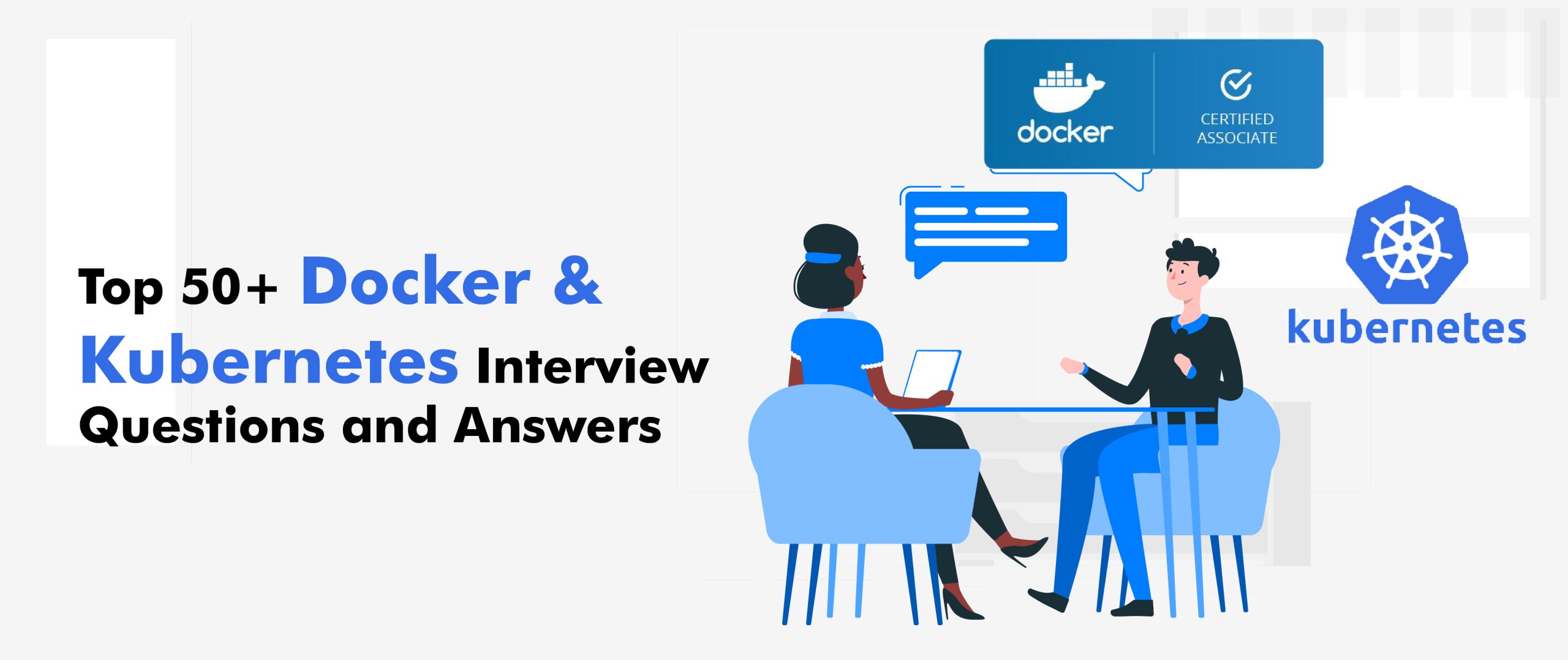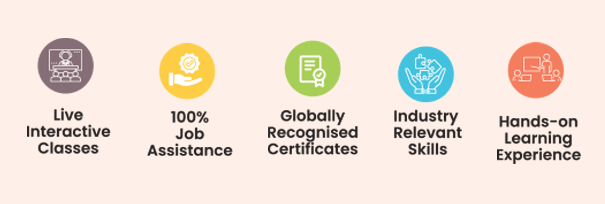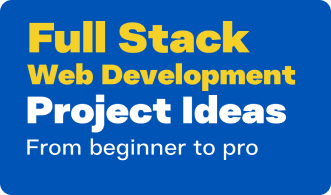Docker and Kubernetes have often been used inter-changeably by people with less knowledge about them. Since both these technologies are fairly new to the world, it comes as no surprise that there is less awareness about their respective functions and needs amidst those who do not use them directly.
If you are someone who has completed their training and certification in Docker and Kubernetes, then you must also be prepared to tackle the next phase of this learning and that is getting the right job to help you become a success.
With the right help, you can go the long way and that is exactly why we are here. With this blog, we will not only guide you towards success by giving you the top 50+ Docker and Kubernetes Interview Questions and Answers but also the chance to get ahead of all your competitors by giving you a valuable insight.
These questions and answers are something you know about. for some questions, you might not even need to look at the answer since you must already know the concept pretty well. However, the sheer knowledge of the fact that this question can be asked in an interview and hold that kind of importance is valuable.
To add a touch of extra confidence to your demeanour during your interview, here is a list of the top 50+ Docker and Kubernetes Interview Questions and Answers.
Let’s begin with Docker Interview Questions and Answers first!
Docker Interview Questions and Answers
With its entry in 2013, Docker became quite the rage by the end of 2017. As the demand for Docker increased, so did the demand for those who are experts in the area.
If you have enough knowledge about the field to begin with, then you should get on ahead now because the competition is bound to get more intense with time.
Here is a list of the most commonly occurring Docker interview questions and answers to help you ace your interview and become a leading name in the tech world.
Question 1. Explain Hypervisor.
Answer. Also known as Virtual Machine Monitor, it is a software that is the reason behind making virtualization possible. This software segregates the host system and assigns the resources to every single virtual environment.
Question 2. How many types of Hypervisors are there?
Answer. There are two Hypervisors –
- Native Hypervisor/ Bare Metal Hypervisor
- Hosted Hypervisor
Question 3. What is Virtualization?
Answer. Virtualization is a process that is used to create the virtual, software-based version of things, be it servers, computer storage, applications, etc. all these virtual environments or versions are being created from on physical hardware system.
One system is split into multiple sections that act like separate individual systems. This splitting is possible due to Hypervisor and the virtual environment that is created by using hypervisor is known as Virtual Machine.
Question 4. Can you explain to us what Docker is?
Answer. It is a containerization platform that allows us to package our applications, along with all its dependencies cumulatively in the form of contains. This ensures seamless working of the application in any environment, ranging from development to testing and production.
Question 5. What do you understand by Docker Images?
Answer. Docker images are used in the creation of containers and can be called the source of Docker container. Upon running a Docker image, a Docker instance is created.
Question 6. Tell us what you mean by Docker Container.
Answer. A Docker Container incorporates the application along with all its dependencies. They are not tied to any particular infrastructure. Instead, they run of any infrastructure, cloud or computer. They can also be referred to as runtime instances of Docker images.
Question 7. What is containerization?
Answer. Containerization solves the problem most often faced by developers during the software development process, wherein a code developed on one machine finds it difficult to work smoothly on another machine due to dependencies.
To solve the above-mentioned problem, the application, its dependencies and configurations are wrapped together in a bundle called container. Docker and Kubernetes are two of the most popular containerization environments.
Question 8. Give me one point of difference between virtualization and containerization.
Answer. In virtualization, a complete virtual machine (VM) is provided to the guest. Wherein in containerization, an isolated space is provided to run the application, which is explicitly dedicated to it.
Question 9. Explain Docker Hub in one line.
Answer. Docker Hub is the registry where the docker images created by docker containers live. It is also the world’s largest public repository of image containers.
Question 10. How will you explain a Dockerfile?
Answer. Dockerfile is a text document containing commands needed to assemble an image. Docker builds images on its own by reading the instructions given in the file called Dockerfile.
Question 11. What is Docker Swarm?
Answer. A native clustering of Docker, Docker Swarm is used to convert a pool of Docker hosts into one virtual Docker host.
Question 12. What is Docker Composed used for?
Answer. Docker Composer is used for the creation of separate containers, hosting them and getting them to communicate with one another.
Question 13. Explain Docker Machine.
Answer. Installing of a Docker Engine on virtual hosts is possible due to a tool named Docker Machine. It also gives you space to provision Docker Swarm Clusters.
Question 14. What is the lifecycle of a Docker Container?
Answer. Docker containers lifecycle can be summed up like this –
- Creation of a container
- Running the container
- Pausing the container (optional)
- Un-pausing the container (optional)
- Starting the container
- Stopping the container
- Restarting the container
- Killing the container
- Destroying the container
Question 15. Name a few namespace types supported by Docker.
Answer. A few namespace types supported by Docker include Mount, Network, PID, User and IPC, amongst others.
Question 16. What is the command for checking Docker Server and Docker Client version?
Answer. The command used for checking Docker server and Docker client version is –
$ docker version
Question 17. How will you get the information on the number of containers that are running, stopped or paused?
Answer. To get the number of containers that are running, stopped or paused, we can use the following command –
$ docker info
Question 18. What command is used to login into the docker repository?
Answer. We can login into the docker repository with –
$ docker login
Question 19. Which command is used for the creation of a docker container from an image?
Answer. $ docker run -it -d is the command used for the creation of a docker container from an image.
Question 20. What does ‘-d’ means in these commands?
Answer. ‘-d’ means that the command has to be carried out in detached mode.
Question 21. How can you pull an image from docker hub in one command?
Answer. To pull an image from docker hub in one command, we need to use –
$ docker pull
Question 22. How can I get the list of all the running containers?
Answer. To get the entire list –
$ docker ps
Question 23. Give commands for starting, stopping and killing a container.
Answer. To start a container –
$ docker start
To stop a container –
$ docker stop
Top kill a container –
$ docker kill
Question 24. How can you build a Dockerfile?
Answer. To build a Dockerfile, use the following command –
$ docker build
Question 25. When is “.dockerfile_name” used?
Answer. “.dockerfile_name” is used when the dockerfile exists in the same file directory.
Kubernetes Interview Questions and Answers
A trending term in the field of technology, Kubernetes has been termed as one of the finest orchestration tools of all times. With some of the biggest names in the sector using Kubernetes, it comes as no surprise that people from across the world have started to value this course and to decide to become an expert in the area.
The demand for Kubernetes experts is soaring and with this blog, you will be all set to get your interview game on as we are about to give you the top Kubernetes interview questions and answers.
Question 1. What is the line of difference between Kubernetes and Docker Swarm on the basis of auto-scaling?
Answer. On the basis of auto-scaling, we can say that Kubernetes is better since it offers auto-scaling, wherein the feature is missing in Docker Swarm.
Question 2. What is Kubernetes?
Answer. Kubernetes is a container management tool, open-source in nature that plays a role in the deployment, scaling and descaling of containers, along with load balancing. It works flawlessly with all cloud providers and can be called a multi-container management solution.
Question 3. What is the connection between Kubernetes and docker?
Answer. The communication of the individual docker containers is facilitated by Kubernetes.
Question 4. What do you understand by container orchestration?
Answer. As suggested by the name, container orchestration stands for all the services in different individual containers working cumulatively to fulfil the needs of a single server.
Question 5. Why do companies use Kubernetes? What are its benefits?
Answer. Some of the benefits for which companies use Kubernetes are –
- Automated rollback
- Auto-healing capabilities
- Automatic scheduling
- Horizontal scaling
Question 6. Explain a Kubernetes cluster.
Answer. A group of nodes used to run containerized applications across multiple machines and environments – on-premises, virtual, cloud-based and physical is a Kubernetes cluster. It facilitates easy development, management and movement of applications.
Question 7. How does Kubernetes exactly work?
Answer. Kubernetes automated the scaling and deployment of multiple containers simultaneously, wherein containers that run in the same application are placed together. Kubernetes acts as supervisor to these groups of containers, making sure they function right.
Question 8. What is Kubernetes employed for?
Answer. The automation of manual operations involved in the scaling, management and deployment of containerized applications is done by Kubernetes. Its work includes keeping track of containers that are deployed into the cloud, shutting down the unused ones, restarting the orphaned ones, and providing resources such as CPU, memory and storage automatically when required.
Question 9. Which can manage more complex software application containers – Kubernetes or Docker Swarm?
Answer. Kubernetes can manage more complex software application containers. Docker Swarm is better suited for the orchestration of simple Docker containers.
Question 10. What do you understand by a Kubernetes namespace?
Answer. When multiple users are working on various projects and are spread geographically vastly, we use Kubernetes namespace. It divides the cluster resources amongst multiple users.
Question 11. Explain federated clusters in a single line.
Answer. When various clusters are managed like a single cluster, they are referred to as federated clusters.
Question 12. What do you understand by a node in Kubernetes?
Answer. Also called minion, a node in Kubernetes is a worker machine that could be either virtual machine or physical machine.
Question 13. What do you understand by a pod in Kubernetes?
Answer. A pod in Kubernetes is a group of containers which run on the same host. If someone is regularly deploying single containers, then their pod and the container will be the same.
Question 14. Explain a container cluster.
Answer. Considered as Compute Engine instances or a set of nodes, a container cluster allows the user to place as well as manage containers a dynamic setup.
Question 15. What does a Heapster allows us to do?
Answer. A Heapster allows us to do event data aggregation and cluster-wide monitoring.
Question 16. Explain what is a kubelet.
Answer. Accountable for making every individual machine run, a kubelet is the lowest level component in the space of Kubernetes. Its only and entire purpose is to ensure that a given set of containers are all running.
Question 17. Give any two ways of providing API Security on Kubernetes.
Answer. Two ways of providing API security on Kubernetes include –
- Monitoring RBAC failures
- Using API authentication
Question 18. Give a line of difference between a replication controller and a replica set.
Answer. The major difference between them lies in the selectors employed for pod replication. Equity-based selectors are used in replication controllers and set-based selectors are used in a replica set.
Question 19. Define a Kubernetes context.
Answer. A Kubernetes context is a collection of access parameters that includes a user, a namespace and a cluster.
Question 20. Explain how Kubernetes scale.
Answer. The command ‘kubectl scale’ is used to instantly alter the quantity of replicas that are needed to run an application.
Question 21. Give 3 recommended security measures for Kubernetes.
Answer. Some recommended security measures for Kubernetes are –
- Auditing support
- Network segregation
- Defining resource quotas
Question 22. Can you explain Minikube to us?
Answer. For easy and smooth local running of Kubernetes, minikube is used.
Question 23. When a service is offered without the Cluster IP, what is it called?
Answer. When a service is offered without the Cluster IP, it is referred to as headless service.
Question 24. Explain GKE.
Answer. GKE, which is the abbreviation for Google Kubernetes Engine, is employed for the management and the orchestration of systems for Docker containers.
Question 25. Name the components of a Kubernetes Master.
Answer. the Scheduler, the API server, the etcd components and the controller manager are the components of a Kubernetes Master.
Conclusion
Getting trained and certified in Docker and Kubernetes is not an easy task but worth the while to be able to enjoy a bright future in the tech world. If you are someone who has already completed Docker and Kubernetes training and certification and is now on the lookout for the right job, then this blog with the top 50+ Docker and Kubernetes Interview Questions and Answers is just what you need today.





 Whatsapp us
Whatsapp us Call us
Call us





